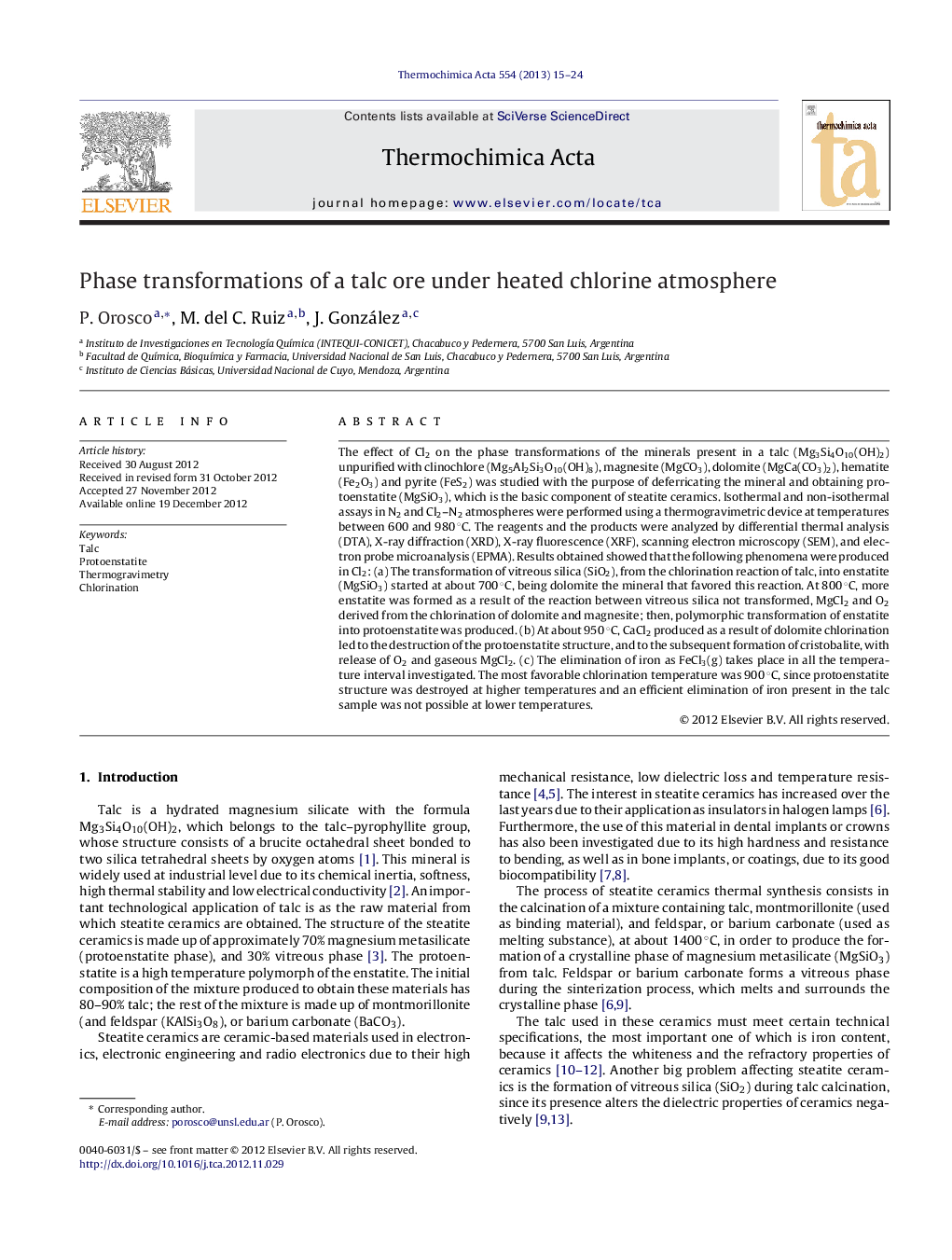| کد مقاله | کد نشریه | سال انتشار | مقاله انگلیسی | نسخه تمام متن |
|---|---|---|---|---|
| 673818 | 1459530 | 2013 | 10 صفحه PDF | دانلود رایگان |

The effect of Cl2 on the phase transformations of the minerals present in a talc (Mg3Si4O10(OH)2) unpurified with clinochlore (Mg5Al2Si3O10(OH)8), magnesite (MgCO3), dolomite (MgCa(CO3)2), hematite (Fe2O3) and pyrite (FeS2) was studied with the purpose of deferricating the mineral and obtaining protoenstatite (MgSiO3), which is the basic component of steatite ceramics. Isothermal and non-isothermal assays in N2 and Cl2–N2 atmospheres were performed using a thermogravimetric device at temperatures between 600 and 980 °C. The reagents and the products were analyzed by differential thermal analysis (DTA), X-ray diffraction (XRD), X-ray fluorescence (XRF), scanning electron microscopy (SEM), and electron probe microanalysis (EPMA). Results obtained showed that the following phenomena were produced in Cl2: (a) The transformation of vitreous silica (SiO2), from the chlorination reaction of talc, into enstatite (MgSiO3) started at about 700 °C, being dolomite the mineral that favored this reaction. At 800 °C, more enstatite was formed as a result of the reaction between vitreous silica not transformed, MgCl2 and O2 derived from the chlorination of dolomite and magnesite; then, polymorphic transformation of enstatite into protoenstatite was produced. (b) At about 950 °C, CaCl2 produced as a result of dolomite chlorination led to the destruction of the protoenstatite structure, and to the subsequent formation of cristobalite, with release of O2 and gaseous MgCl2. (c) The elimination of iron as FeCl3(g) takes place in all the temperature interval investigated. The most favorable chlorination temperature was 900 °C, since protoenstatite structure was destroyed at higher temperatures and an efficient elimination of iron present in the talc sample was not possible at lower temperatures.
► We studied the effect of Cl2 on minerals present in a talc of ultramafic origin.
► Isothermal and non-isothermal assays were performed in N2 and Cl2–N2 atmospheres.
► The reagents and the products were analyzed by DTA, XRD, SEM, and EPMA.
► The chlorination produced protoenstatite at 800 °C.
► Calcination of a talc ore in Cl2 produces more enstatite than thermal treatment in N2.
Journal: Thermochimica Acta - Volume 554, 20 February 2013, Pages 15–24